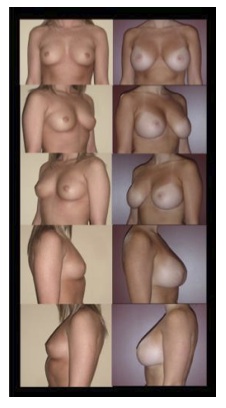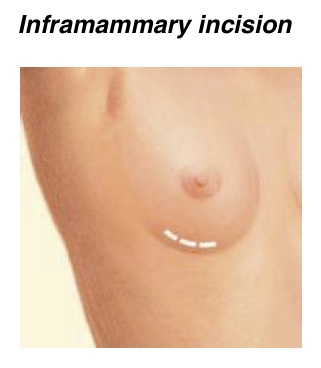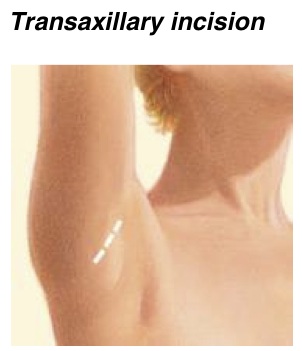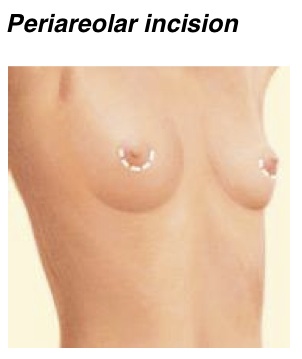What is Breast Augumentation?
Also known as augmentation /mammoplasty, breast augmentation surgery involves using implants to full fill your desire for fuller breasts or to restore breast volume lost after weight reduction or pregnancy. Expect to pay in excess of £4,000 in the UK for breast implants or augmentation if this is not within your budget, then take a look at the the Ukraine, 29%-69% cheaper than the United Kingdom which equates to around £1150 (subject to personal consultation and type of procedure). Facilities are
state of the art and hand picked for their surgeon’s expertise in this field of surgery.
Although there potentially may be complications with any type of surgery and not specifically breast implants, they do not impair breast health. Careful review of scientific research conducted by independent groups such as the Institute of Medicine has found no proven link between breast implants and autoimmune or other systemic diseases. These risks are very rare but it is important that you make an informed decision, you can achieve this by researching professional bodies, independent medical
website information and also our website provided for you by Medicare -4u.com. This in no way implies any type of contract between you and Medicare-4u, the contract will be between yourself and your chosen surgeon in Kiev in conjunction with help and information to help you achieve this and to make sure that your trip to the Ukraine, Kiev goes as smoothly as possible and that your stay is successful and comfortable along with your satisfaction of your surgical procedure. We can help with all aspects from your initial telephone enquiry to a British based office of Medicare-4u.com and medical Facilitator within the Healthcare profession and registered with a United Kingdom Professional Governing Body who will help you on your way and answer any questions from your initial thought of having surgery in the Ukraine, Kiev.
Breast Augumentation Before and After
If you are dissatisfied with your breast size, breast augmentation surgery (either breast enhancement or breast enlargement) is a choice to consider. Breast augmentation can:
- Increase fullness and projection of your breasts
- Improve the balance of your figure
- Enhance your self-image and self-confidence
Also known as augmentation mammoplasty, the procedure involves using implants to full fill your desire for fuller breasts or to restore breast volume lost after weight reduction or pregnancy
What it won’t do
Breast augmentation does not correct severely drooping breasts. If you want your breasts to look fuller and to be lifted due to sagging, abreast lift may be required in conjunction with breast augmentation.
Breast lifting can often be done at the same time as your augmentation or may require a separate operation. Your plastic surgeon will assist you in making this decision.
Is it right for me?
- You are physically healthy
- You have realistic expectations
- Your breasts are fully developed
- You are bothered by the feeling that your breasts are too small
- You are dissatisfied with your breasts losing shape and volume after pregnancy, weight loss, or with aging
- Your breasts vary in size or shape
- One or both breasts failed to develop normally
Preparing for breast augmentation surgery
After researching the basics about breast enhancement or breast enlargement, many patients want to know what to expect before breast augmentation surgery.
Prior to breast surgery, your Surgeon may ask you to:
- Get lab testing or a medical evaluation
- Take certain medications or adjust your current medications
- Get a baseline mammogram before surgery and another one after surgery to help detect any future changes in your breast tissue
- Stop smoking well in advance of your breast augmentation surgery
- Avoid taking aspirin, anti-inflammatory drugs and herbal supplements as they can increase bleeding
Special instructions you receive will cover:
What to do on the day of surgery
Post-operative care and follow-up
Breast implant registry documents (when necessary)
The risks of breast implants and complications after breast augmentation include:
- Unfavourable scarring
- Bleeding (hematoma)
- Infection
- Poor healing of incisions
- Changes in nipple or breast sensation, may be temporary or permanent
- Capsular contracture, which is the formation of firm scar tissue around the implant
- Implant leakage or rupture
- Wrinkling of the skin over the implant
Anaesthesia risks
- Fluid accumulation
- Blood clots
- Pain, which may persist
- Deep vein thrombosis, cardiac and pulmonary complications
- Possibility of revision surgery (correction)
Breast augmentation procedure steps-What happens during breast augmentation surgery?
Step 1 – Anaesthesia
Medications are administered for your comfort during breast augmentation surgery. The choices include intravenous sedation and general anaesthesia. Your doctor will recommend the best for you.
Step 2 – The incision
Incision options include:
Incisions are made in inconspicuous areas to minimize visible scarring. You and your plastic surgeon will discuss which incision options are appropriate for your desired outcome.
Incisions vary based on the type of implant, degree of enlargement desired, your particular anatomy, and patient-surgeon preference.
Step 3 – Implant choice: Silicone breast implants or saline breast implants?
Breast size and shape are important, so be honest and open about your expectations when talking with your surgeon.
Implant type and size will be determined not just on your desired increase in size but more importantly on your breast anatomy, skin elasticity and body type.
Step 4 – Inserting and placing the breast implant
After the incision is made, a breast implant is inserted into a pocket either:
Under the pectoral muscle (a submuscular placement), or
Directly behind the breast tissue, over the pectoral muscle (a submammary/ subglandular placement)
The method for inserting and positioning implants depends on the type of implant, degree of enlargement desired,
your body type, and your surgeon’s recommendations.
Step 5 – Closing the incisions
Incisions are closed with layered sutures in the breast tissue and with sutures, skin adhesive or surgical tape to close the skin.
Over time the incision lines will fade.
Step 6 – See the results
The results of breast augmentation surgery are immediately visible. Over time, post-surgical swelling will resolve and incision lines will fade. Satisfaction with your new image should
continue to grow as you recover and realize the fulfilment of your goal for fuller breasts.
Breast augmentation recovery
Many patients have questions about breast augmentation and recovery.
Although many factors are involved with determining your actual recovery time for breast augmentation, you will likely experience a post-surgical recovery period of 24 to 48 hours and an additional reduced-activity period of a few days, you will likely experience soreness and swelling for a few weeks.
Exercise and normal activity can resume at the direction of your plastic surgeon.
Over time, post-surgical swelling will decrease and incision lines will fade.
You will be given specific instructions that may include: How to care for your breasts following breast augmentation surgery, medications to apply or take orally to aid healing and reduce the risk of infection, and when to follow-up with your plastic surgeon. Be sure to ask your plastic surgeon specific questions about what you can expect during your individual recovery period.
Where will I be taken after my surgery is complete?
What medication will I be given or prescribed after surgery?
Will I have dressings/bandages after surgery? When will they be removed?
Are stitches removed? When?
When can I resume normal activity and exercise?
When do I return for follow-up care?






